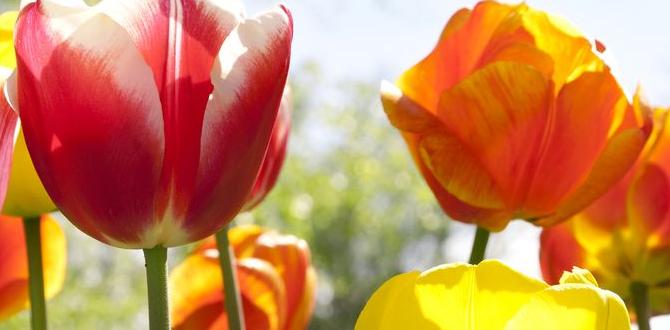Discover Banff’s hidden gems beyond the tourist trail with this essential local secrets guide. Uncover charming neighborhoods, unique shops, and local eateries that offer an authentic Canadian Rockies experience.
Welcome, fellow travelers! Dreaming of Banff but worried about stumbling through the same crowded spots? Banff is a jewel in the Canadian Rockies, famous for its breathtaking mountain landscapes and pristine turquoise lakes. But beyond the iconic views, there’s a vibrant local life waiting to be explored. Many visitors stick to the absolute center, missing out on the true character and spirit of this mountain town.
Planning a trip can feel overwhelming, especially when you want to find those special, less-obvious places that make a vacation truly memorable. Don’t let that happen! We’re here to guide you through Banff’s distinct neighborhoods, sharing local secrets that will enrich your adventure. Get ready to discover the Banff we locals love, making your trip both comfortable and unforgettable.
Understanding Banff’s Layout
Banff, while feeling like a cozy mountain village, is actually quite well-organized. For visitors, understanding its general layout is key to navigating and discovering its diverse offerings. The town is roughly divided by the Bow River and the Canadian Pacific Railway line, with most of the main commercial activity concentrated in the downtown core.
However, the real magic often lies just a short walk or drive away. Think of Banff like a series of concentric circles, with the bustling downtown being the innermost one. As you move outwards, the pace often slows, and the local flavor intensifies. We’ll explore these outer rings to uncover those special finds you might otherwise miss. Understanding this geography helps you plan your days, whether you’re looking for a quiet morning coffee, a family-friendly park, or a local-favorite restaurant without a long queue.
Downtown Banff: Beyond the Main Street
When most people think of Banff, they picture Banff Avenue. And yes, it’s the heart of the town, bustling with souvenir shops, tour operators, and restaurants. But even here, there are secrets worth uncovering.
Hidden Gems on the Side Streets
Venture just a block or two off Banff Avenue, and you’ll find a different vibe. Look for places like:
- local artisan shops tucked away, offering unique crafts and art distinct from the mass-produced souvenirs.
- smaller cafes with loyal local followings, perfect for a quiet coffee and a pastry away from the crowds.
- boutique bookstores where you can find local history and nature guides.
The Banff Avenue Experience, Upgraded
Even on Banff Avenue, look up! Many fantastic eateries and shops occupy the upper floors of buildings, offering unique views and a quieter atmosphere than street level. Don’t be afraid to peek into doorways or ascend a staircase – you might discover a hidden gem.
Understanding Your Essentials Near Downtown
For travelers who might need extra comfort and convenience, like those managing personal care needs, having access to essentials is key. While downtown has larger stores, smaller, more specialized pharmacies or convenience stores can be more discrete and quicker to access for items like travel-friendly adult diapers or child diapers. Knowing these are within easy reach of the main tourist hubs offers peace of mind, allowing you to enjoy your explorations without worry. For example, the local Shoppers Drug Mart or independent pharmacies are usually well-stocked and approachable.
The Banff Trail Area: A Local Haven
Just a short distance from the downtown core, typically across the railway tracks or a bit further west, lies the Banff Trail area. This is where many locals live and play, offering a more relaxed and residential feel. It’s an excellent place to experience Banff like a resident.
Parks and Recreation Spaces
This area boasts some of the most beloved local parks:
- Central Park: Often overlooked by tourists, this is a spacious green area perfect for picnics, with the Bow River flowing alongside. It’s a favorite spot for locals to walk their dogs, enjoy the sunshine, and escape the bustle.
- Bow River Recreation Pathway: Seamlessly links through this area, offering a fantastic, paved path for walking, jogging, or cycling with beautiful river views. It’s one of the best ways to connect with nature without a strenuous hike.
Community Gathering Spots
Look for community halls or small local pubs that might not be listed in every major guidebook. These are often where you’ll find local events or simply a more authentic interaction with residents. The Banff Legion, for instance, can be a hub for local events and is a more down-to-earth spot.
Eating Like a Local
While Banff Avenue has its share of well-known restaurants, the Trail area often hosts eateries that are favorites among those who live here year-round. You might find:
- Family-run diners serving hearty, affordable meals.
- Bakeries that open early for fresh-baked goods for locals heading out on adventures.
- Casual pubs offering local brews and a friendly atmosphere distinct from the more tourist-centric bars.
These spots are generally less crowded and offer a genuine taste of Banff’s culinary scene.
Banff’s Residential Neighborhoods: A Glimpse into Life
While officially you might not “visit” residential neighborhoods in the same way you visit a park, understanding areas where locals reside can lead you to quieter streets, beautiful architecture (often log cabins and mountain-style homes), and a sense of community.
The Charm of Older Districts
Areas built in the earlier days of Banff often feature charming, older homes with unique character. Walking through these streets (respectfully, of course) can be a peaceful escape. Notice the architecture nestled against the stunning mountain backdrops.
Finding Local Amenities
In residential zones, you’re more likely to find things like:
- Community playgrounds which can be great for families traveling with children needing a break.
- Small convenience stores that cater to local needs.
- Post offices or libraries often serve as community hubs.
These aren’t typically tourist attractions, but they offer a glimpse into the everyday life of Banff residents.
Staying Comfortably in Residential-Adjacent Areas
When choosing accommodation, consider areas just outside the immediate downtown core that might border residential zones. This often provides a quieter stay, potentially with more space, and might even offer a better value. For travelers who prioritize comfort and discretion, especially those who might need access to personal care items like adult diapers, staying in a slightly quieter area can be beneficial. You can still be a short drive or pleasant walk away from all the main attractions, but have a more tranquil base. Look for vacation rentals or smaller inns in these peripheral areas.
The Edge of Town and Beyond: A Different Perspective
As you move towards the edges of Banff townsite, you enter areas that blend residential living with access to natural trails and less developed landscapes. These areas offer tranquility and stunning views.
Access to Trails and Nature
Many residential areas in Banff are adjacent to national parklands. This means you can often step out your door and be on a walking trail within minutes. This is a massive perk that locals cherish and visitors can tap into:
- Easier access to lesser-known trailheads: Avoid the crowds at Lake Louise or Moraine Lake by exploring smaller, local trails that offer incredible mountain scenery.
- Wildlife viewing opportunities: While always maintaining a safe distance and respecting animals, these areas can sometimes offer more natural wildlife encounters.
- Peace and quiet: If your goal is to truly disconnect, staying or exploring near the town’s edge provides unparalleled serenity.
Scenic Drives and Viewpoints
Even if you’re not staying in these areas, taking a scenic drive can reveal fantastic viewpoints that are often less populated than the prime tourist spots. Roads leading out of the main town towards areas like Cascade Mountain or towards Banff Golf Course often offer stunning vistas. For example, the drive along the scenic Spray Valley Trail (Highway 742) starts near Banff and offers incredible, less-trafficked mountain panoramas.
Practical Considerations for Travelers
When exploring these slightly more remote areas, especially if you are traveling with children or require personal care, planning is essential. Ensure you have enough supplies, including child diapers if needed, and consider how you will access amenities. Mobile service can sometimes be patchier. However, the payoff in terms of peace, natural beauty, and a more authentic experience is immense. For instance, knowing there’s a reliable place to purchase more diapers, or a comfortable resting spot, is crucial for a stress-free outing. This is where having a well-packed bag with essentials, like comfortable and absorbent adult or child diapers, can make all the difference.
Local Transportation and Getting Around
Understanding how to move between Banff’s neighborhoods is crucial. While Banff is walkable, especially the downtown core, you’ll find yourself venturing further afield to explore local secrets.
Banff Transit Options
The town of Banff operates an excellent public transit system. The Roam Public Transit buses are efficient, affordable, and connect most of the town and popular surrounding areas. This is by far one of the best ways to get around for visitors who don’t have a car, or for locals wanting to leave it parked.
- Route 1 (Banff – Lake Louise): Runs seasonally and is a great way to access iconic spots without the hassle of parking.
- Route 2 (Banff – Johnston Canyon): Also seasonal, offering access to a popular hike.
- Local Routes: Connect downtown to residential areas, trailheads, and shopping districts.
You can find detailed schedules and routes on the Roam Transit website.
Cycling and Walking
Banff is very bike-friendly, with numerous paved trails and bike lanes. Renting a bike is a fantastic way to cover more ground and enjoy the scenery at your own pace. For shorter distances, walking is key. Many of the “local secrets” we’ve discussed are best discovered on foot, allowing you to appreciate the details of the neighborhoods.
Driving and Parking
If you have a car, be aware that parking can be challenging and expensive in the downtown core, especially during peak season. Many local neighborhoods have street parking, but be mindful of residential parking zones and any restrictions. For visitors who need to drive and may necessitate bringing personal items like absorbent adult diapers or child diapers, having a car offers flexibility for discreet transport and storage.
What Makes Banff’s Neighborhoods Special?
It’s the blend of incredible natural beauty with a strong sense of community. Even in the bustling downtown, you’re never far from a mountain vista. The neighborhoods offer a chance to peel back the layers of tourism and see the town as its residents experience it daily.
Community and Culture
Banff has a unique culture born from its location. It attracts people from all over the world who share a love for the outdoors. This creates a vibrant, diverse community. You can feel this in the local cafes, shops, and even the way people interact on the street. It’s a place where people are passionate about their surroundings and each other.
Access to the Outdoors
This is the biggest draw. Every neighborhood in Banff offers unparalleled access to nature. Whether it’s a quick stroll along the Bow River, a hike up a nearby trail, or simply enjoying a view from your window, the mountains are an ever-present, inspiring backdrop.
Peace and Tranquility
While Banff can be busy, its neighborhoods offer refuge. Stepping away from the main tourist hubs allows for moments of quiet reflection and genuine relaxation. Finding these pockets of peace is what truly elevates a travel experience, allowing you to recharge and connect with the destination on a deeper level.
Essential Local Banff Cheat Sheet
To help you navigate Banff’s neighborhoods like a local, here’s a quick reference guide to some key areas and what they offer:
| Neighborhood/Area | Key Features | Local Vibe | Best For |
|---|---|---|---|
| Downtown Banff (Banff Ave core) | Main shops, restaurants, tour operators, hotels. | Bustling, energetic, tourist-focused but with hidden gems. | Convenience, iconic views, first-time visitors. |
| Banff Trail Area (West/Northwest of core) | Central Park, Bow River Pathway, local eateries, quieter streets. | Relaxed, residential, community-oriented. | Picnics, walks, local dining, family time. |
| Residential Neighborhoods (e.g., Cascade Drive, Sundance Drive areas) | Charming homes, quiet streets, direct access to nature. | Peaceful, private, authentic local living. | Serenity, scenic walks, experiencing local architecture. |
| Town Outskirts/Edge (e.g., near Banff Springs Hotel, Golf Course surrounds) | Stunning views, access to trails, luxury accommodations, tranquility. | Secluded, upscale, nature-immersed. | Photography, peaceful retreats, longer nature excursions. |
Tips for Stress-Free Exploration
No matter which neighborhood you’re exploring, comfort is paramount. If you or a family member require personal care, ensuring you have a steady supply of discreetsolutions like adult or child diapers is vital. Knowing you can easily find them at local pharmacies or have them packed ensures your focus remains on enjoying the stunning scenery and local charm. Pack a comfortable day bag with essentials, water, snacks, and any personal care items, allowing you to spontaneously explore without worry.
FAQs
Q1: Is Banff town itself considered a neighborhood?
A1: Banff town, especially the area around Banff Avenue, is the core of the townsite and functions as a central hub. However, it is composed of several smaller neighborhoods and districts, each with its own unique character, from the bustling commercial downtown to quieter residential areas.
Q2: How easy is it to get between Banff’s neighborhoods?
A2: It’s quite easy! Banff is a compact townsite. Roam Transit buses connect most areas efficiently. Walking is also a great option for many connections, especially between downtown and nearby residential areas. Cycling is excellent, as are well-maintained pathways.
Q3: Are residential neighborhoods open to visitors?
A3: Yes, residential neighborhoods are public areas for walking, cycling, and enjoying the scenery. However, it’s important to be respectful of residents’ privacy. Stick to public streets and sidewalks, keep noise levels down, and remember that these are people’s homes.
Q4: Where can I find less crowded restaurants in Banff?
A4: To find less crowded spots, venture a block or two off Banff Avenue, explore the Banff Trail area, or look for places that are known to be local hangouts rather than tourist traps. Many of these offer excellent food at more moderate prices.







